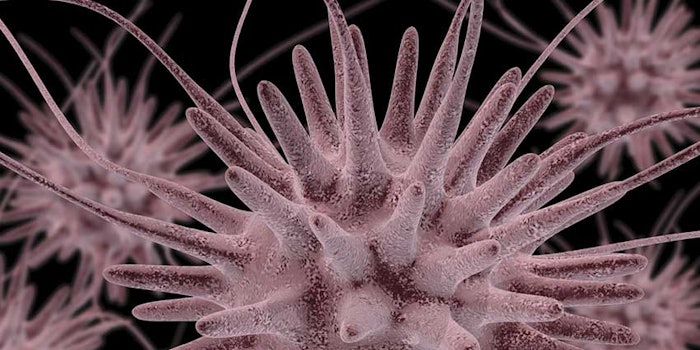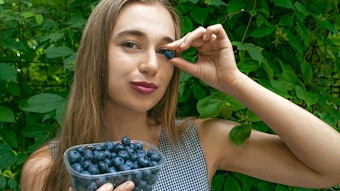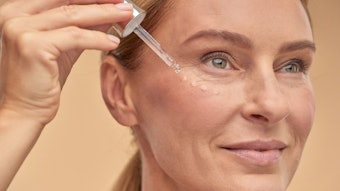
The cosmetics industry has always looked to biology for innovative new ingredients—functional bioactives, and vibrant fragrances and botanicals. More recently, cosmetic chemists and product developers have sought unconventional actives from unexpected organisms. As a result, donkey milk, pig collagen, bee venom, snail slime, enzymes and extracts from animal tissues, plants, seaweed, fungi and even human cells all have found their way into cosmetic products. This article reviews recent microbiological advances and ingredients for cosmetics and personal care products.
Microbiological Sourcing
The cosmetics industry is turning to microorganisms to find stabler, more sustainable ways of manufacturing biologically derived molecules. New tools for DNA sequencing and microbiology are enabling researchers to identify microbial strains with valuable properties. Advances in DNA synthesis and genetic engineering also are enabling the design of custom microbes for application across cosmetics and personal care. The cosmetics industry was one of the first to explore the potential of biotechnology for the identification and production of active ingredients. Today, the industry continues to bet on biology as technology evolves, opening up previously impossible avenues of research and development.
These new avenues are driven by advances in tools to read and write DNA. Genes that can encode enzymes and other proteins with valuable cosmetic activities are being sequenced at an unprecedented high speed and low cost. These sequences can then be readily synthesized, re-writing DNA so it can be inserted into the genomes of yeasts and other microbes. Once engineered, these microbes use the new genes to produce valuable compounds as they grow in a microbrewery, similar to beer or winemaking. These compounds, known as cultured ingredients,1 can then be extracted from the yeast and used in formulations.
Culturing Cosmetic Ingredients
Due to their tightly controlled production, cultured ingredients can provide a more transparent, reliable, economical and renewable source for cosmetic formulas than extracts from animal or plant sources. They also can be produced with fewer contaminants and any other by-products originating from animal or agricultural sources. Additionally, for many ingredients where chemical synthesis of optically pure products is difficult or impossible, biologically sourced ingredients from engineered microorganisms allow for the efficient sourcing of biocompatible products.
Hyaluronic acid: A crucial molecule for the health of our skin and cartilage, hyaluronic acid (see Figure 1) has become a valuable product in industrial, pharmaceutical and cosmetic applications. The commercial production of hyaluronic acid once involved extraction from a biological source—traditionally animal tissues such as rooster combs, the vitreous humor or synovial fluid from cattle, or even human umbilical cords. Extraction from these tissues was difficult, expensive, low-yield and prone to contamination.2
Bacteria from the genus Streptococcus also produce hyaluronic acid using genes that are remarkably similar to those found in animal cells. This similarity indicates the gene was likely transferred naturally from an animal to the bacteria sometime in the past. Because of this similarity, hyaluronic acid produced by bacteria is compatible for human applications.
However, Streptococci are difficult and expensive to grow in culture and can be human pathogens. Transferring the hyaluronic acid synthase genes from Streptococci to other bacteria that are GRAS and better-suited for commercial production, such as Bacillus subtilis, has allowed for the bacterial production of safe, high purity hyaluronic acid.3, 4 Today, the costs of high purity hyaluronic acid are rapidly decreasing as a result of new, fermentation-derived production processes.
Today, the industry continues to bet on biology as technology evolves and opens up previously impossible avenues of research and development.
Ceramides and sphingosines: The story is similar for ceramides (see Figure 2) and the related class of sphingosines. These waxy, lipid molecules play an important role in cell membranes and have long been used in cosmetics for their emollient properties and ability to strengthen the skin barrier. Like hyaluronic acid, ceramides were traditionally extracted from animal tissue by-products of slaughterhouses. Fears about infectious contaminants have led to their sourcing from plant tissues, where low yields make the process inefficient.
Chemical synthesis also is not a suitable alternative, since producing ceramides this way results in a racemic mixture. For use in cosmetic products, ceramides must have the same stereochemistry as those produced by the skin. Sourcing from a biological process, ideally one that produces a human skin-compatible molecule, is key to accessing the potential of this valuable class of molecules.
To address these production issues, yeasts like Saccharomyces cerevisiae5 and Wickerhamomyces ciferrii6 have been deployed to produce ceramides for commercial cosmetic use. Wild yeasts already produce skin-biocompatible ceramides with genes that are highly similar to those found in humans, and in higher yields than what plants can produce.
Modifications to optimize these processes also have been identified. For example, yeast culture conditions can be changed to boost yields during fermentation.5 Metabolic engineering can delete yeast enzymes such as sphingolipid hydroxylases that degrade ceramide pathway intermediates and limit the ultimate yield.7 Further recombinant expression of human genes in yeast can also modify the ceramide molecule in biologically relevant ways.7
Surfactants: Bacteria, yeasts and fungi also naturally produce lipid-based surfactant molecules (see Figure 3) that, when excreted by the cell, reduce surface tension and act as antimicrobials. These biosurfactants have garnered significant attention in recent years for their environmental compatibility as well as low toxicity and skin irritation potential. Like traditional surfactants, biosurfactants are amphiphilic detergents that can provide emulsifying, solubilizing and foaming effects in cosmetic formulations. They therefore offer an alternative to petrochemically sourced surfactants, which are ubiquitous in personal care products.8
Biosurfactants are anticipated to offer more sustainable options than traditional surfactants, including in their production methods, improved properties and less harsh formulations.8 Rhamnolipids and sophorolipids are good examples and especially important because their biosynthesis is well-understood. Their recombinant production and natural production by the bacteria Pseudomonas aurignosa and a number of yeasts impart benefits in titer, fermentation efficiency, and extraction and ease of downstream processing, respectively.9
Squalane and Beyond
For all the ingredients discussed thus far, wild microbial sources already exist. In these cases, genetic engineering is useful for boosting production in the natural host, or transferring the pathways to a safer or more tractable host organism. But microbes can also be engineered to produce compounds they never evolved to make.
Entirely new enzyme pathways can be built in microorganisms by stitching together the genes encoding each enzymatic step. The explosion in DNA sequencing has allowed researchers to identify sometimes thousands of enzyme variants responsible for producing the enormous diversity of plant metabolites. These genetic variants can be resynthesized and transformed into the genomes of microorganisms where they can function to produce new molecules. With decreasing costs of DNA synthesis and automated tools for engineering and analyzing cells, more complex biochemistry can be explored and engineered into microorganisms for the production of cultured ingredients.
One such example for cosmetic ingredients is cultured squalane. Traditionally derived from shark liver, squalane (see Figure 4) is a valuable cosmetic ingredient celebrated for its emollient properties, and one company has developed a renewable source of squalane from sugarcane in bioengineered yeasts.10 The yeast strains are engineered with enzymes from the isoprenoid pathway of plants, and produce high concentrations of β-farnesene when grown in fermentation. β-farnesene is a precursor to squalene in vivo and can be readily transformed to squalene, and subsequently squalane, after its extraction from the yeast cells.
Notably, the isoprenoid pathway also is a precursor to a large number of other commercially relevant molecules, from fragrance ingredients such as sandalwood or patchouli oil, to pharmaceuticals like the anti-malarial drug artemisinin and cosmetic actives that are difficult to biologically produce at economically significant and sustainable quantities today, such as cedrol, totarol or forskolin.
For botanical actives found in plants, the options for commercial scale production are varied. The plants can be domesticated and carefully cultivated, harvested after months or even years, and the active molecule purified. On the other hand, plant tissue culture, pioneered for pharmaceutical development and cautiously adopted for cosmetics, has also emerged as a convenient method for extracting functional compounds by eliminating dependencies upon geography, seasonality and cultivation practices while promoting sustainable practices. This process fosters the production of ingredients in a sterile, controlled and sustainable environment, free of residual agrochemicals.
However, researchers face a number of hurdles to make this technique a scalable source for target compounds. The process of re-growing functional plant tissues from cells is challenging because each plant initially requires unique nutrient conditions for inducing growth, and again for target compound synthesis. Identifying the relevant genes and culturing these target compounds through engineered microbial fermentation eclipses the research and development necessary for initial plant cell growth to focus on production
scalability.11, 12
A quiet revolution is brewing, changing our understanding of ourselves and our relationship to hygiene and personal care.
Rethinking Skin
As microbes are revolutionizing how cosmetic ingredients are produced, a quiet revolution is brewing, changing how we understand ourselves and our relationship with hygiene and personal care products. This revolution is a new understanding of the microbiome, including the thousands of microbial species thriving in and on our bodies, which has reorganized our understanding of skin.13 No longer a highly guarded border, separating the human from assault of the outside world, the skin is being recast as an ecosystem in its own right.
Like macroscopic ecosystems, the microbiome finds strength in biodiversity. Consistently, measures of healthy skin are correlated with a more diverse microbial population.14 Nurturing diverse populations means rethinking cosmetic formulations from the ground up to consider safety not only to human cells, but also to microbial cells. The recent U.S. Food and Drug Administration ruling against antimicrobial compounds such as triclosan in hand soaps is an important first step.15 But compounds with antimicrobial properties are used throughout formulations, and little is known about how common ingredients affect our microbial companions.
New microbe-centric products are leading the charge in helping cosmetics formulators and consumers consider microbes as friends to be nurtured, rather than germs to be eliminated. These and other probiotic cosmetics, coupled with a powerful growth in the market for cultured ingredients, point to a very microbial future for cosmetics; where bioactives are produced by microbes or are living bacteria themselves, benefiting both the human and microbial part of our skin.
Conclusion
Microbes are playing an increased role in our foods, with fermented products like yogurt and kombucha growing in popularity. New research about the microbiome is impacting how we think of our health and hygiene, and is beginning to change the way we treat infections and formulate personal care products. Microbes also are changing our manufacturing technologies, with a growing number of products made via microbial fermentation rather than extraction or chemical synthesis. As we look to the future, there is great potential for microbes to impact how we produce and formulate cosmetics—from ingredients produced in culture, to probiotics and living “actives.”
References
- RP Shetty, Cultured ingredients arrive, Perfumer & Flavorist 38 34–37 (2013)
- CG Boeriu, J Springer, FK Kooy, LAM van den Broek and G Eggink, Production methods for hyaluronan, Intl J Carbohydrate Chem, article ID 624967, 14 pages (2013)
- B Widner et al, Hyaluronic acid production in Bacillus subtilis, App and Envt Microbio 71.7 3747–3752 (2005)
- J Davies De Oliveira et al, Genetic basis for hyper production of hyaluronic acid in natural and engineered microorganisms, Microbial Cell Factories 15 119 (2016)
- KH Kwun et al, Production of ceramide with Saccharomyces cerevisiae, Appl Biochem Biotechnol 133(3) 203-10 (Jun 2006)
- cosmeticsandtoiletries.com/formulating/function/repair/Evonik-Ferments-Yeast-for-Alternative-Ceramide-Production-187128741.html (accessed Jan 18, 2017)
- S Murakami et al, Producing human ceramide-NS by metabolic engineering using yeast Saccharomyces cerevisiae, Scientific Reports 5 16319 (2015)
- http://onlinelibrary.wiley.com/doi/10.1111/j.1468-2494.2009.00493.x/epdf (accessed Jan 18, 2017)
- T Tiso, A Germer, B Küpper, R Wichmann and LM Blank, Methods for recombinant rhamnolipid production, Hydrocarbon and Lipid Microbiology Protocols 65-94 (2015)
- D McPhee, A Pin, L Kizer and L Perelman, Deriving renewable squalane from sugarcane, Cosm & Toil 129(6) (2014)
- A Barbulova, F Apone and G Colucci, Plant cell cultures as source of cosmetic active ingredients, Cosmetics 1(2) 94-104 (2014)
- C Schürch, Potential of plant cells in culture for cosmetic application, Phytochemistry Reviews 7(3) 599-605 (2008)
- The Human Microbiome Project Consortium, Structure, function and diversity of the healthy human microbiome, Nature 486 207-214 (2012)
- A Salava and A Lauerma, Role of the skin microbiome in atopic dermatitis, Clinical and Translational Allergy 4:33 (2014)
- fda.gov/NewsEvents/Newsroom/PressAnnouncements/ucm517478.htm (Accessed Jan 18, 2017)











